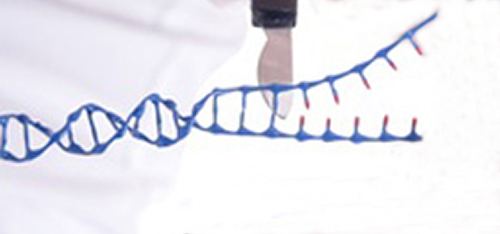If a Cas9 nuclease variant could be engineered that was less grabby, it might loosen its grip on DNA sequences throughout the genome except those sequences representing on-target sites. That’s the assumption that guided a new investigation by researchers at Massachusetts General Hospital. These researchers, led by J. Keith Joung, M.D., Ph.D., developed a high-fidelity Cas9 variant that harbored alteration designed to reduce nonspecific DNA contacts. This variant not only reduced off-target effects to undetectable levels, it also retained on-target activities comparable to wild-type Cas9.
“Our creation of a Cas9 variant that brings off-target effects to levels where we can no longer detect them, even with the most sensitive methods, provides a substantial advance for therapeutic applications in which you want to accurately hit your target without causing damage anywhere else in the genome,” said Dr. Joung. “But its impact will also be incredibly important for research applications because off-target effects can potentially confound the results of any experiment. As a result, we envision that our high-fidelity variant will supplant the use of standard Cas9 for many research and therapeutic applications.”
Dr. Joung’s team detailed their findings January 6 in the journal Nature, in an article entitled, “High-fidelity CRISPR–Cas9 nucleases with no detectable genome-wide off-target effects.” The article described how the team focused on the fact that certain portions of the Cas9 enzyme can interact with the backbone of the target DNA molecule. Pursuing an observation originally made by co-lead author Vikram Pattanayak, M.D., Ph.D., of MGH Pathology, the team altered four of these Cas9-mediated contacts by replacing the long amino acid side-chains that bind to the DNA backbone with shorter ones unable to make those connections.
“Our previous work suggested that Cas9 might bind to its intended target DNA site with more energy than it needs, enabling unwanted cleavage of imperfectly matched off-target sites,” explained Dr. Pattanayak. “We reasoned that, by making substitutions at these four positions, we could remove some of that energy to eliminate off-target effects while still retaining full on-target activities.”
The researchers tested all 15 possible variants in which any combination of one, two, three, or four of those amino acid side-chains were altered and found that one three-substitution and one four-substitution variant appeared to show the greatest promise in discriminating against mismatched target sites while retaining full on-target activities in human cells.
The researchers then more fully characterized the four-substitution variant, which they called SpCas9-HF1 (Sp for the Streptococcus pyogenes bacteria, which is the source of this widely used Cas9, and HF for high-fidelity). They found that this variant induced on-target effects comparable to those observed with the original unaltered SpCas9 when used with more than 85% of 37 different guide RNAs they tested.
“Notably, with sgRNAs targeted to standard non-repetitive sequences, SpCas9-HF1 rendered all or nearly all off-target events undetectable by genome-wide break capture and targeted sequencing methods,” wrote the authors of the Nature article. “Even for atypical, repetitive target sites, the vast majority of off-target mutations induced by wild-type SpCas9 were not detected with SpCas9-HF1.”
Dr. Joung’s team developed additional derivatives of SpCas9-HF1 called HF2, HF3, and HF4 capable of eliminating the few residual off-target effects that persisted with the HF1 variant and a small number of guide RNAs. “If SpCas9-HF1 using a certain guide RNA still produces a handful of off-target effects that are particularly difficult to eliminate, it may be possible to engineer new variants that get rid of even those effects,” asserted Dr. Joung.
The researchers also showed that SpCas9-HF1, like its naturally occurring counterpart, could be combined with other useful alterations that extend its utility. Previous work from the Joung lab published last summer in Nature had shown that introducing a series of amino acid substitutions could expand the targeting range of unaltered SpCas9. In the current study, the authors show that introducing these same alterations into SpCas9-HF1 also extended the targeting range of the high-fidelity variant.
“With its exceptional precision, SpCas9-HF1 provides an alternative to wild-type SpCas9 for research and therapeutic applications,” the authors of the Nature article concluded. “More broadly, our results suggest a general strategy for optimizing genome-wide specificities of other CRISPR-RNA-guided nucleases.”







